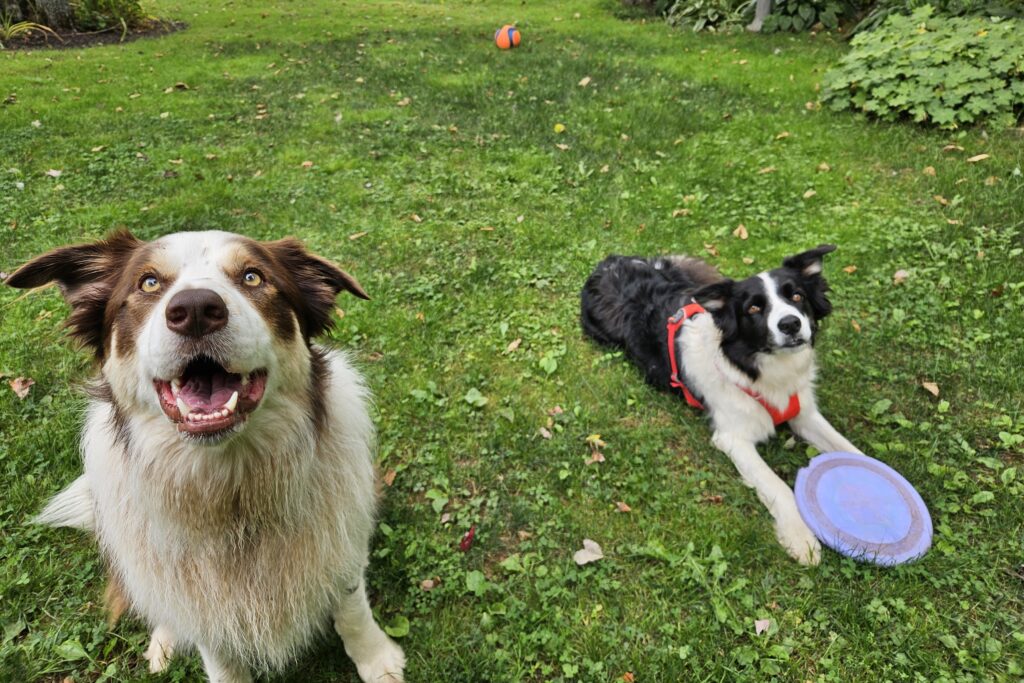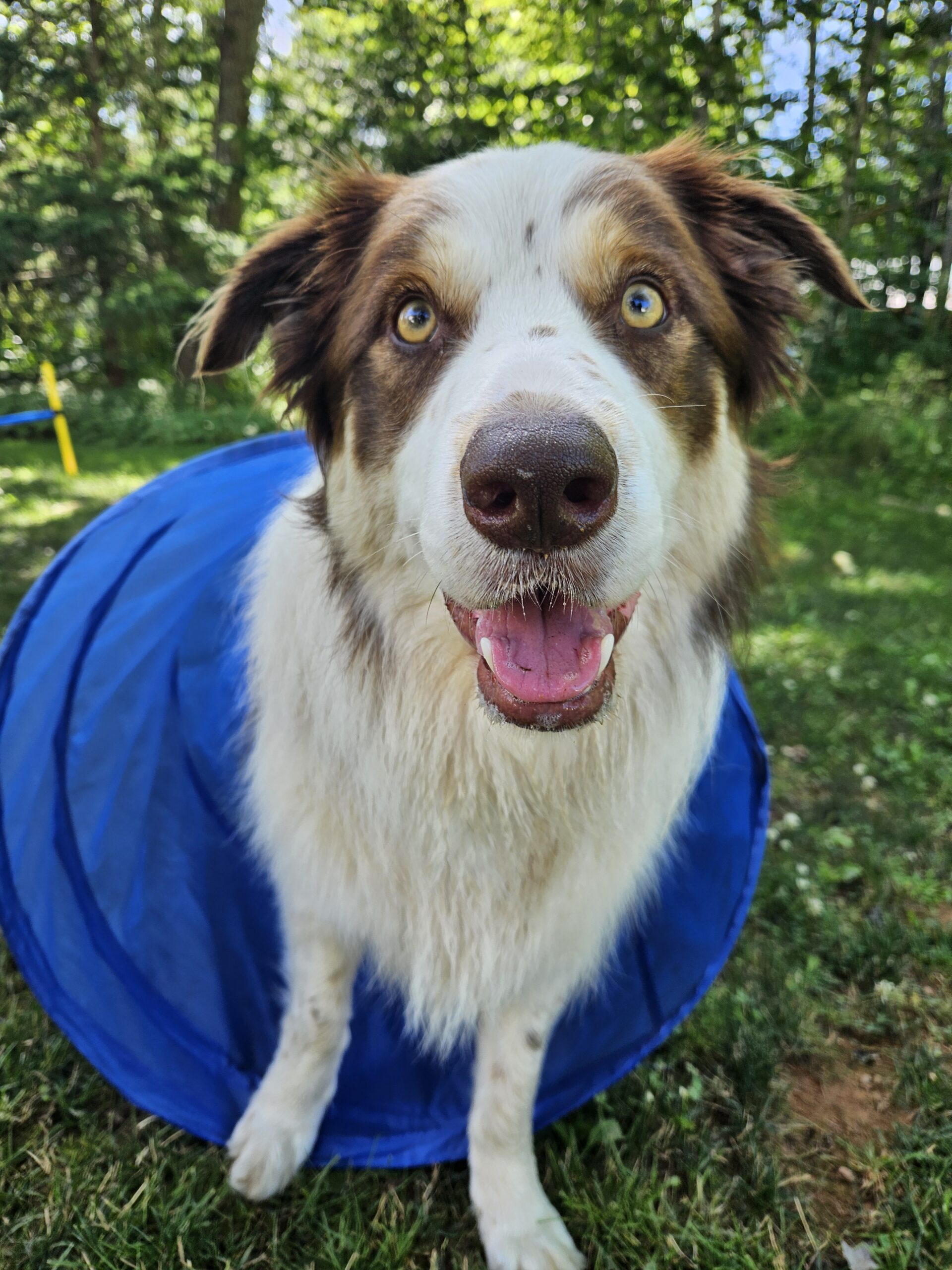
We all hit training plateaus from time to time: whether we are training a new trick, working on attention and focus around distractions, or building duration on a known skill such as leash walking, sometimes it feels like it’s taking us forever to reach our training goals! When faced with these training challenges, the best thing to do is step back and focus on the human end of the leash first: are we making errors that confuse our dogs, and how can we make their learning experience easier and more reinforcing? Below are 6 tips that can help you overcome your training plateau and make training more efficient and hit those goals!
- Film it! If you only change one thing about the way your train, it should be to film each and every training session. Filming your sessions is a great way to track training data and progress: there is no better way to quickly see what is going well and what is going not-so well. Oftentimes we’re unaware of the mechanical errors we make in training that affect how we communicate with our dogs (this is true of us professional trainers as well) and filming your sessions will help you catch these errors before they become habit. Filming your sessions also helps you catch subtle body-language signals your dog may be giving you, or things in the environment that are distracting to your dog that you may not have noticed.
2. Antecedent arrangement: “Antecedent arrangement” is dog-training speak for setting up the environment to prevent unwanted behaviours and to make desirable behaviours more likely. Changing the environment is an easy way to change behaviour! Thoughtfully setting up your environment by removing distractions, strategically placing any props you need, and thoughtful treat placement when reinforcing a behaviour, will go a long way to make your desired behaviour more likely. Examples:
- Working on mat training: stand next to the mat or station, facing it, and guide your dog up using a hand target; if you stand in front of the mat or station, your dog may feel too much spatial pressure and won’t target it
- Train in a quiet space with minimal distractions and noises (e.g. away from windows, other dogs or animals, shoes or other tempting items are put away, etc.)
- Tossing a treat way from you after clicking a behaviour, to reset the dog for the next rep (this works well for recall training!)
- Set up a mat or raised platform at your side as a target for teaching heel position (this will keep the dog aligned straight next to you and to prevent a “crooked” heel position)
- When teaching heelwork or loose-leash walking, reinforce at the seam of your pants (i.e. at your side)

3. Keep sessions short and sweet! It can be tempting to keep going for several minutes when training a new skill, but training sessions should be short- really short! This is because animals (including humans) stay more focused and retain more information when learning in short bursts followed by breaks. A great way to help keep track of time and prevent drilling your dog, is to set a timer and break up your training sessions into 30-60 second increments, then take a break, then repeat another 30-60 second session, then take a break. End the session before the behaviour breaks down (i.e. end with a successful rep) and engage your dog in play! (Fun fact: there is some evidence suggesting that play after training helps dogs better retain what they have learned!)

4. Be thoughtful about reinforcement! What we use as reinforcers (rewards), how frequently we reinforce, and where we place the reinforcement, have huge impacts on success in training! If you’re feeling stuck on a particular training task, remember the following:
- It is helpful to rank your dog’s fave reinforcers from lowest-value (e.g. kibble) to highest value (e.g. cheese, a favorite toy, etc.)
- High rates of reinforcement (ROR) are super important! For most behaviours, we want to aim for 10-20 clicks and treats per minute. If you are working on loose leash walking, you will want to aim for clicking and treating every few steps you take. This will help put value on the behaviour and keep your dog in the game! Keep track of ROR by filming your sessions or using a training journal to track.
- Click and treat before your dog makes a mistake.
5. Slice Thin and Remember the Three D’s of Dog Training: “Slice thin” refers to a technique called splitting, where you break a goal behaviour down into tiny, more manageable micro-behaviours and reinforce those first. For example, if you’re teaching your dog to pivot with two front paws on a platform, you might click and treat for tiny rear-paw movement first. If you’re teaching “stay”, you will want to click and treat for short durations (1-2 seconds) first. Only increase criteria as the dog is successful! This helps keep rate of reinforcement high, reduces frustration, and keeps your dog in the game!
When splitting , we also want to remember the Three D’s of Dog Training: Distractions, Duration, and Distance. When training a new behaviour, you will want to work on each individual D first, then combine them: add in distractions first; then remove distractions and work on duration (“how long can my dog maintain this behaviour?”), then go back and work on training from a distance (if applicable).
Conclusion
Being a good clicker trainer isn’t about perfection —it’s about being thoughtful, observant, and consistent. When I was working on my dog-training accreditation, my KPA faculty member used to tell my class, “We’re not striving for perfection, we’re striving for excellence”. By setting up the environment for success, keeping sessions short and focused, and reviewing your progress through video, you can achieve excellence in dog training: you’ll build stronger skills and a better relationship with your dog. With just a few intentional tweaks, your training sessions can become more effective and fun for both of you.

